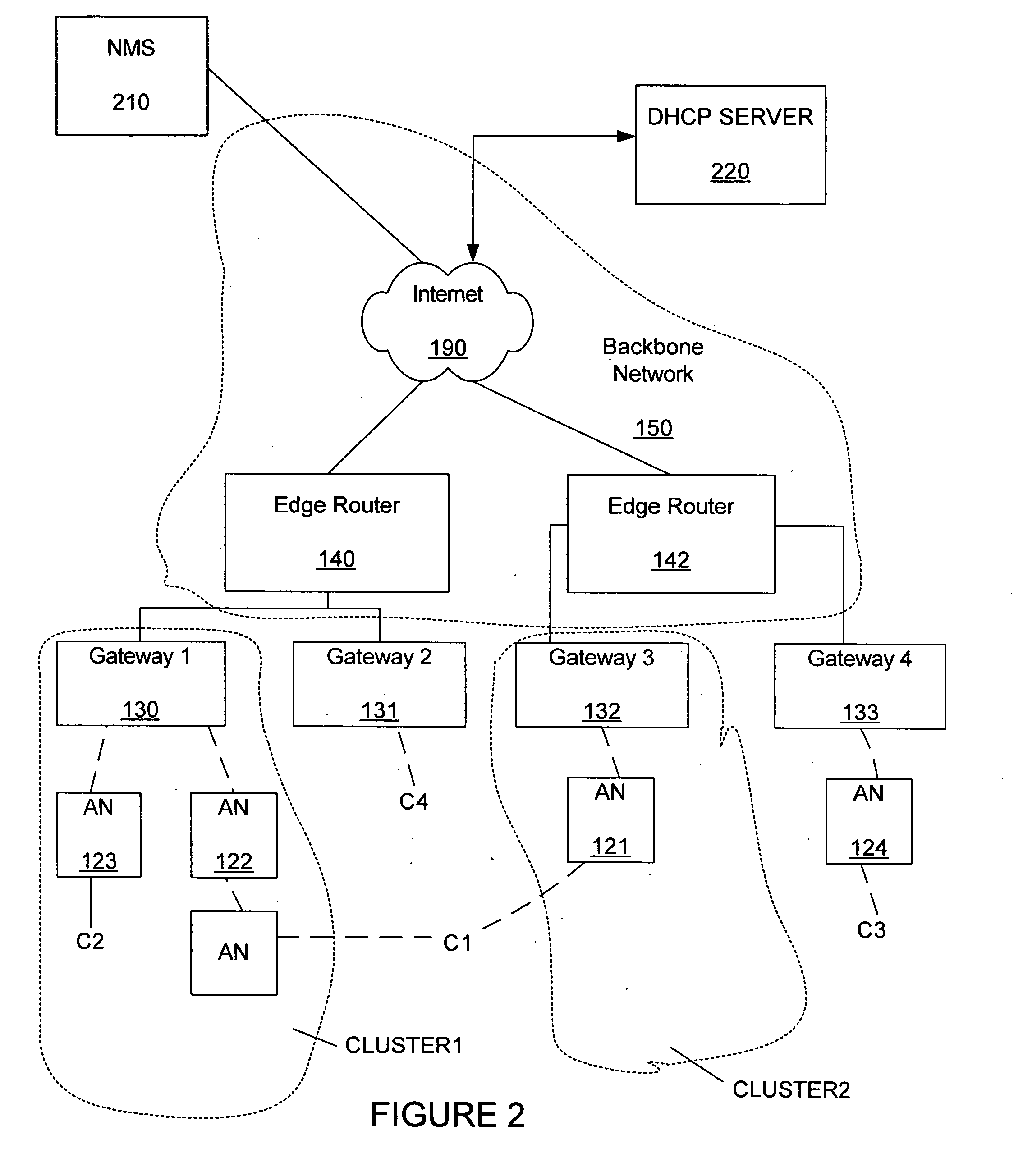Method of subnet roaming within a network
a subnet and network technology, applied in the field of wireless communications, can solve the problems of inefficient routing, limited approach, and considerable latencies in routing data traffic over the tunnel
- Summary
- Abstract
- Description
- Claims
- Application Information
AI Technical Summary
Benefits of technology
Problems solved by technology
Method used
Image
Examples
Embodiment Construction
[0027] As shown in the drawings for purposes of illustration, the invention is embodied in an apparatus and method for wireless roaming between subnets within a wireless mesh network.
[0028]FIG. 1 shows a wireless mesh network that can include embodiments of the invention. Generally, the invention includes allowing a client C1 to communicate with a destination device 110, as the client C1 roams from wireless access with a first access node 120 to wireless access with a second access node 121. The wireless access nodes 120, 121 generally belong to a wireless mesh network.
[0029] The wireless mesh network as shown in FIG. 1 includes a first gateway 130, a second gateway 131, a third gateway 132 and a fourth gateway 133. Generally, the gateways 130, 131, 132, 133 are connected through wires to a first edge router 140 and a second edge router 142 of a backbone network 150. The edge routers 140, 141 provide wired connections to an internet network 190. The destination device 110 is conne...
PUM
 Login to View More
Login to View More Abstract
Description
Claims
Application Information
 Login to View More
Login to View More - R&D
- Intellectual Property
- Life Sciences
- Materials
- Tech Scout
- Unparalleled Data Quality
- Higher Quality Content
- 60% Fewer Hallucinations
Browse by: Latest US Patents, China's latest patents, Technical Efficacy Thesaurus, Application Domain, Technology Topic, Popular Technical Reports.
© 2025 PatSnap. All rights reserved.Legal|Privacy policy|Modern Slavery Act Transparency Statement|Sitemap|About US| Contact US: help@patsnap.com



